
[ Academic Research ] • edition 1.0 • March/2019
STAGE LEVEL MEASUREMENT OF ICT/IS AND ANALYTICS DIFFUSION IN ORGANIZATIONS

[ Academic Research ] • edition 1.0 • March/2019
STAGE LEVEL MEASUREMENT OF ICT/IS AND ANALYTICS DIFFUSION IN ORGANIZATIONS
The root of the studies regarding the Stages of Growth Theory in Management Information Systems (SGT/MIS) comes from the research conducted at Harvard Business School by Professor Neil C. Churchill, James L. McKenney, F. Warren McFarlan and Richard L. Nolan, in the 1970s. The original concepts behind the Nolan´s Stages of Growth Model (NSGM) were proposed by Richard L. Nolan in 1973 by the article "Managing the Computer Resource: A Stage Hypothesis", published in Communications of ACM journal, where a descriptive stage hypothesis was presented, based on the study of expenditures for Data Processing (DP).
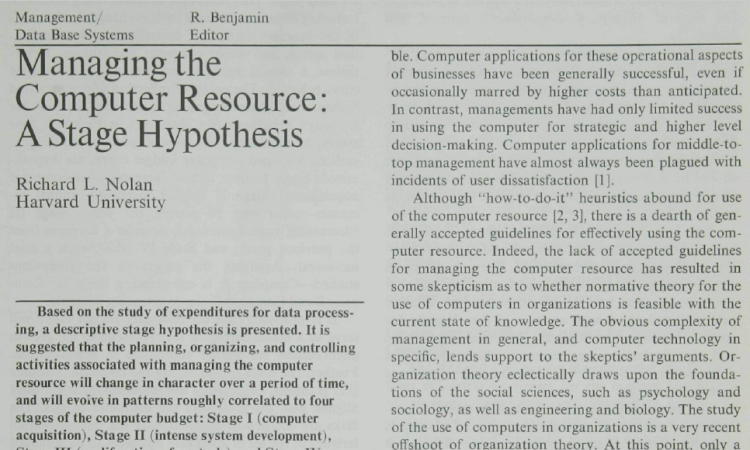
In his first version of the Nolan´s Stages of Growth Model (NSGM), presented in 1973, Nolan suggested a descriptive model where the planning, organization and control of organizational activities associated with the assimilation of computer technologies - currently, Information and Communication Technology/Information Systems (ICT/IS) initiatives - would change in feature over a period of time, and could evolve in patterns roughly correlated to four stages, I-Initiation, II-Contagion, III-Control, IV-Integration (Nolan, 1973, p. 401). In the later version of the NSGM, preliminarily presented in 1975, the stage III was divided to include two other stages, thus totalizing six stages (Nolan, 1975, 1979): I-Initiation, II-Contagion (also known as 'Expansion'), III-Control (also known as 'Formalization'), IV-Integration, V-Data Administration, and VI-Maturity, as has emerged the stages based on Organizational Learning. Guidelines for action were established to make change a proactive managed process, instead of a reactive environmental process.
Academic literature of the last decades mentions the great struggle of many researchers to develop models of growth stages, which were both theoretically founded and empirically validated. Many researchers have made efforts to access the Nolan model's validity and plausibility, one of the best-known, debated and controversial frameworks for describing the typical developmental patterns of ICT/IS initiatives in organizations, with a high level of interest and acceptance among practitioners, as a valuable empirically-based theory and accepted description of managing technological change over time.
On the other hand, other studies published in academic literature regarding the NSGM emphasizing that it has not been completely confirmed through statistical testing, and this might be due to the lack of adequacy of the questionnaires used in capturing the essence of the stages model, or because of the failure to perform reliability and validity tests on measuring instruments. The empirical bases of the model are questionable, and the model has been testing poorly because it is underspecified, since Nolan had not explicitly defined his own operationalization of the model, remaining proprietary, other researchers have used their own perceptions for the foundations of the maturity measures.
The arrival of newer technologies, quite different from those existing in the 70s, such as: Analytics and Data-driven, Artificial Inteligence (AI), Blockchain, Internet of Things (IoT), etc., with adoption and diffusion in Organizations, calls for fresh approaches of Nolan´s model in terms of their implementation and management.
Favaretto, J. E. R. (2015). Stage Level Measurement of Information and Communication Technology in Organizations. (Unpublished master's thesis). Fundacao Getulio Vargas, Sao Paulo School of Business Administration (FGV EAESP). Sao Paulo, Brazil. https://doi.org/10.13140/RG.2.2.16844.82562Favaretto, J. E. R., & Meirelles, F. S. (2015). Nolan´s stage level measurement of Information and Communication Technology in modern organizations. In: 46th Annual Southwest Decision Sciences Institute (SWDSI) Conference, pp.410-418. Houston, USA.Nolan, R. L. (1973). Managing the computer resource: A stage hypothesis. Communications of the ACM, 16(7), 399-405. doi:10.1145/362280.362284Nolan, R. L. (1975). Thoughts about the fifth stage. ACM SIGMIS Database, 7(2), 4-10. doi:10.1145/1017570.1017571Nolan, R. L. (1979). Managing the Crises in Data Processing. Harvard Business Review, 57(2), 115–126.
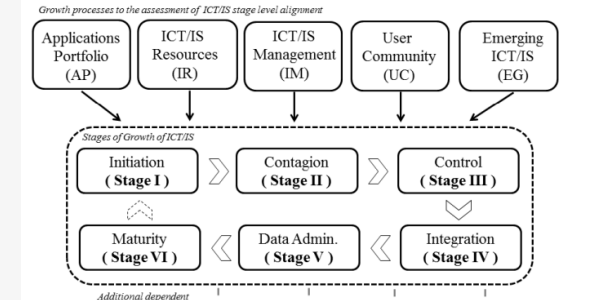
As a theoretical contribution, the framework creation to this study and the development of a scale instrument with the purpose of making the measurement of the ICT/IS initiatives stage level in modern organizations, adapted for ... (full PDF)
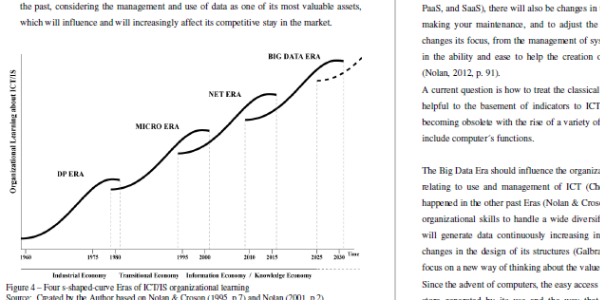
The rigor in use of theoretical concepts, methodological rules, addressed in additional preparation to empirical research efforts, was the focus of the author to study, understand, clarify and integrate all the pieces of a huge puzzle, which got its start about 40 years ago. How can we measure the Nolan´s stage level of ICT/IS initiatives in Organizations? ... (full PDF)
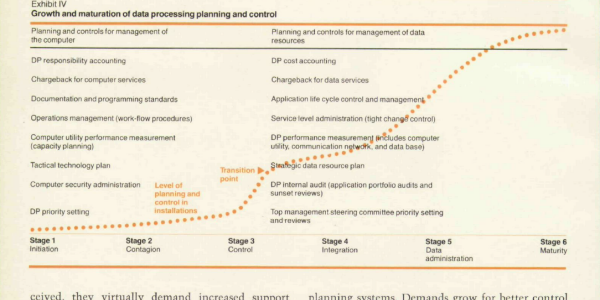
In the later version of Nolan´s Stages of Growth Model (NSGM), preliminarily presented in 1975, the stage III was divided to include two other stages, thus totalizing six stages. In 1979, another paper reinforced the same six stages, now ... (read this paper)
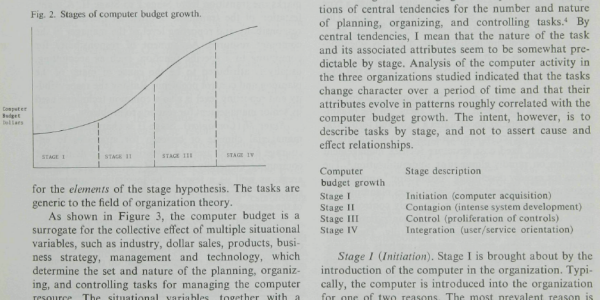
In the academic field of the Management Information Systems (MIS), Nolan´s Stages of Growth Theory (NSGT) first appeared in 1973 as probably the most well-known and widespread theoretical framework for the assimilation ... (read this paper)